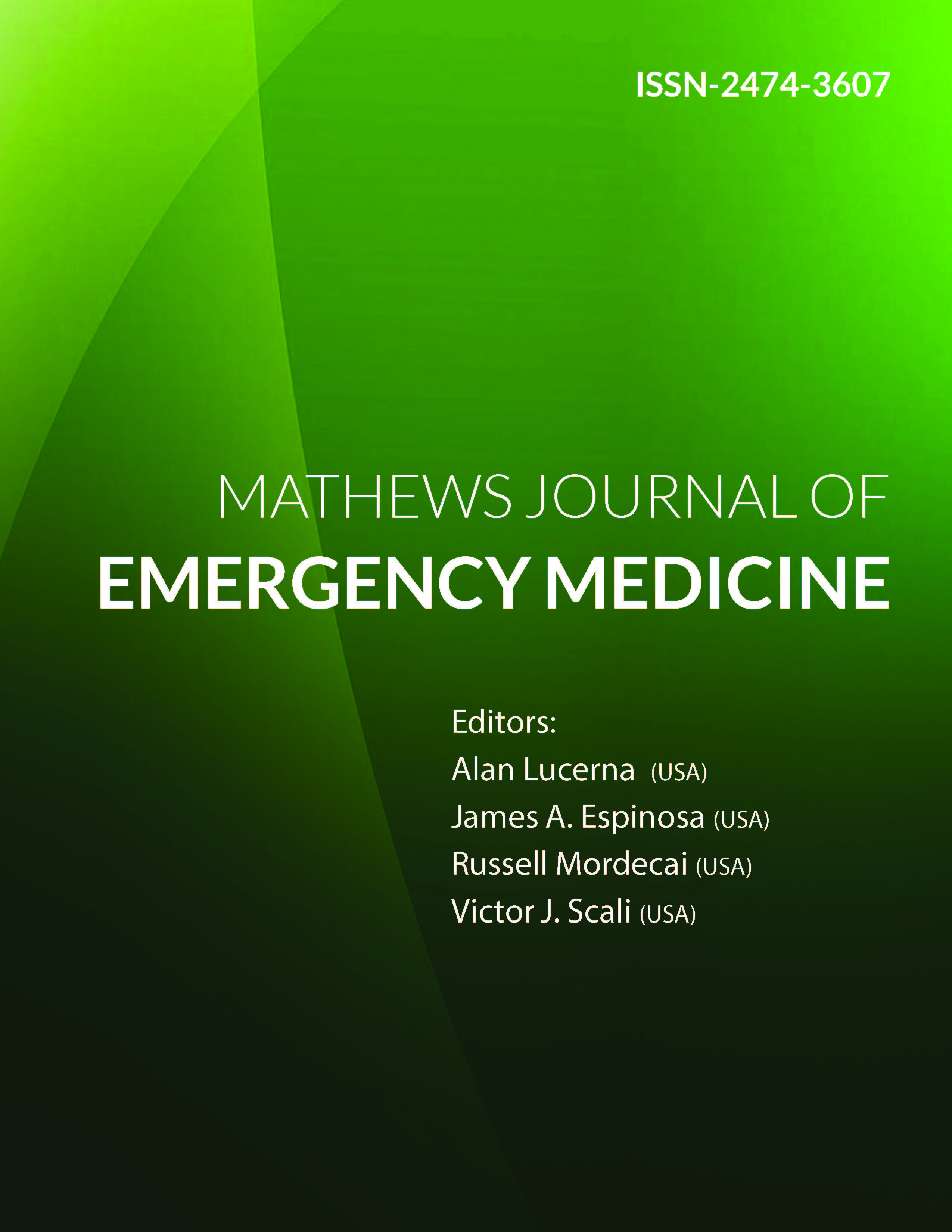
Information Links
Previous Issues Volume 6, Issue 1 - 2021
Accuracy of Vancomycin Dosing in the Emergency Department: Two Dosage Sizes do Not Fit All
Melissa Reeves DO1, Karina Gotliboym DO2, James Espinosa MD3*, Victor Scali DO4, Alan Lucerna DO5, Russell Mordecai DO3, Henry Schuitema DO6
1Department of Obstetrics and Gynecology, Inspira Medical Center, Vineland, NJ, 08360
2Department of Emergency Medicine, Kaiser Permanente Roseville Medical Center, Roseville, CA, USA
3Department of Emergency Medicine, Rowan University SOM/Jefferson - Stratford, NJ, USA
4Emergency Medicine Residency Academic Coordinator, Rowan University SOM/Jefferson - Stratford, NJ, USA
5Program Director, Emergency Medicine, Jefferson NJ/Rowan University SOM
6Chief, Department of Emergency Medicine, Jefferson, NJ
*Corresponding Author: James Espinosa, Department of Emergency Medicine,Rowan University, SOM/Jefferson - Stratford, NJ, USA, 18 East Laurel Road, Stratford, NJ 08084, E-mail: [email protected]
Received Date: March 22, 2021
Published Date: April 29, 2021
Copyright: Espinosa J, et al. © (2021).
Citation: Reeves M, Gotliboym K, Espinosa J, Scali V, Lucerna A, Mordecai R, et al. (2021). Accuracy of vancomycin dosing in the Emergency Department: Two dosage sizes do not fit all. Mathews J Emergency Med. (6)1:41.
ABSTRACT
Purpose of the study: The purpose of this study was to determine if vancomycin is dosed correctly---which was defined as dosing within +/- 10% of the Infectious Disease Society of America (ISDA) guidelines that recommend 15 mg/kg every 8-12 hours based on actual body weight for patients with normal renal function. A secondary goal was to determine if there is a difference in dosing compliance between attending physicians and residents. This information could then lead to a possible educational intervention to increase vancomycin dosing compliance. The model used in this study was cellulitis.
Materials and Methods:The setting was the three emergency departments of a community-based, university-affiliated hospital system.The study design was a retrospective chart review utilizing data from laboratory and emergency departments.
Results:The rate of dosing non-compliance in this study was 43.7%. The rate of compliance was 56.3%.The results show that 98.6% of the non-compliant cases were undertreated, relative to the 15 mg/kg (+/- 10%) IDSA Guidelines. Over-treatment occurred in only a single case of non-compliant treatment (1.4%). The difference between these two groups is highly statistically significant. (p=<0.001).
31% of the non-compliance derived from the Attending group and 27.9% of non-compliance was from the Resident group. The difference in performance (non-compliance) between Resident and Attending physician groups was not statistically significant. (p=0.563)Two doses (1000 mg and 1500 mg) comprised 94% of the total doses given. The 1000 mg dose was given in 84 cases (67%) and the 1500 mg dose was given in 34 cases (27%). Thus the two most common doses, given 94% of the time, generate a 43% rate of non-compliance with the correct dose target.
Conclusions: Compliance with ISDA guidelines was 56.3% with a 43.7% rate of noncompliance.The vast majority of the non-compliant cases involved under-dosing, which could lead to antibiotic resistance.
There was no statistical difference in antibiotic dosing compliance between resident and attendings physicians. The two most common doses given (1000 mg and 1500 mg) generated the 43% noncompliance. It would appear that a two dose sizes strategy, as it were, is in inadequate means to correct dosing—and that milligram per kilogram calculations with more exact dosing is needed to improve compliance. This data can be used as a baseline for improvement.Accurate dosing of vancomycin should be associated with the prevention of further antibiotic resistance.
KEYWORDS: Coagulation study utilization; Emergency medicine laboratory utilization; Choosing wisely in emergency medicine;Emergency medicine laboratory utilization economic modeling